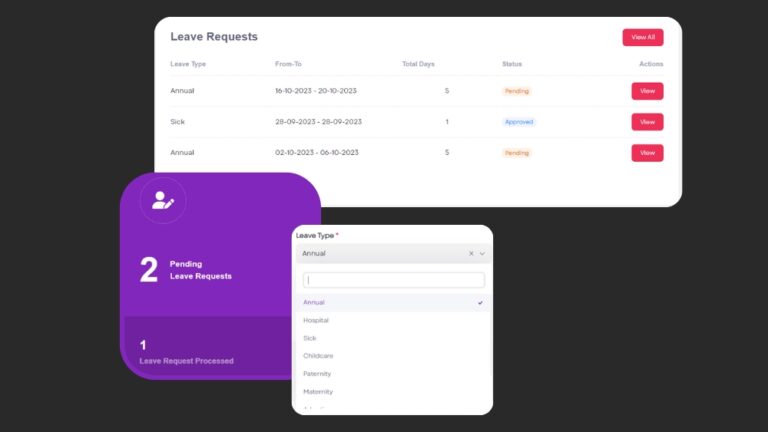Managing a global team has its undeniable advantages—diverse perspectives, round-the-clock operations, and access to a broader talent pool. Yet, these benefits come with a significant challenge that is often overlooked: seasonal downtime. When teams are spread across different regions, the variation in holiday schedules can wreak havoc on productivity, deadlines, and team cohesion. This article will delve into how disparate holiday schedules affect global teams, using Halloween as an illustrative example, and explore strategies for HR professionals to manage these complex dynamics.
The Impact of Global Holiday Schedules on Productivity
For businesses operating across multiple regions, understanding how local holidays impact team members is essential to maintaining consistent productivity. Even with careful planning, the global workforce can experience slowdowns when one region observes a holiday while another is working at full throttle. The key issue arises when these discrepancies are not aligned with company-wide operations, leading to delayed responses, miscommunication, and unintentional bottlenecks.
A research by the Society for Human Resource Management (SHRM) reported that 53% of global teams experience delays or reduced productivity during holiday periods due to misaligned schedules across regions. This discrepancy becomes even more pronounced during significant holiday seasons, such as the winter holidays, where a 2019 Glassdoor survey indicated that 55% of global employees reported struggling to meet deadlines due to colleagues’ holiday absences.
How Halloween Highlights Regional Holiday Differences
Let’s take Halloween as an example. While primarily celebrated in the United States, Canada, and parts of Europe, it doesn’t hold the same significance worldwide. As workers in the U.S. take part in festivities, they might be less available, resulting in productivity dips or a shift in focus that may go unnoticed by colleagues in regions that don’t observe the holiday. In contrast, other areas might be preparing for their own upcoming local holidays. This staggered holiday culture often leads to gaps in coverage, forcing other team members to pick up the slack or wait until their counterparts return. The lack of synchronization can create an unbalanced workload and frustrate teams.

This proves that a single team’s holiday absence can disrupt entire workflows, especially when the absent team handles critical functions. For instance, a project managed by multiple teams may find itself at a standstill when one region goes offline for a public holiday. In a global setup, these disruptions create delays that ripple across departments, clients, and stakeholders. Communication is the first casualty, followed closely by missed deadlines and quality compromises.
Coordinating Team Schedules
HR teams must not only manage holidays but also coordinate schedules across different time zones and cultural contexts. This can be a logistical nightmare without the right strategies and tools in place.
Building a Holistic View of Your Global Team's Calendar
A central, shared calendar is crucial for managing global teams. This calendar should include local holidays, vacations, and project deadlines to offer a complete view of team availability. By adopting this holistic approach, HR professionals can anticipate potential gaps and plan accordingly. This also ensures that managers and team leaders are fully aware of when key team members will be absent, enabling them to redistribute workloads effectively. Tools like Microsoft Teams or Google Calendar are amazing examples.
Take a Proactive Aproach!
Proactivity is the cornerstone of managing seasonal downtime. By analyzing historical data, HR teams can predict peak downtime periods for each region and plan work schedules around these lapses. For instance, coordinating major project deadlines outside of known holiday periods, or adjusting workloads to accommodate upcoming vacations, can prevent major disruptions.
Best Practices to Manage Time Off in Global Workforces
Let´s dive into what are some of the best practices that HR Teams should get into in order to manage their global workforcer in the most optimal way.
1. Establishing Clear Communication Channels
Transparency is key when it comes to managing time off. Clear communication channels ensure that employees can easily inform their managers about upcoming holidays and that leadership can adjust plans accordingly. Regular updates and reminders about regional holidays can also keep everyone on the same page, preventing last-minute surprises.
Note!
A platform like Hero, by Agile HRO possesses all the tools for time off management, establishing clear communication channels between team members and their respective managers.

2. Encouraging Cross-Department Collaboration
Collaboration between departments can be a powerful tool in managing downtime. When one team is offline due to a holiday, another can take over certain responsibilities, ensuring that operations continue without significant disruption. Encouraging departments to collaborate on overlapping schedules can prevent bottlenecks and ensure that critical functions are always covered.
3. Fostering a Culture of Transparency and Flexibility
Fostering a culture that values transparency and flexibility around time off helps to reduce the stress that can arise from seasonal downtime. By encouraging open discussions about upcoming holidays and offering flexible work options, companies can create a more supportive environment where employees feel comfortable taking time off without fear of repercussions. This approach leads to higher employee satisfaction and a more cohesive team dynamic.
Managing global teams through seasonal downtime requires a delicate balance of planning, communication, and flexibility. HR professionals who take a proactive approach to holiday scheduling, align project deadlines with global calendars, and foster a culture of transparency will find themselves better equipped to navigate the complexities of a global workforce. As the world becomes increasingly interconnected, the ability to manage these nuances becomes not just a necessity, but a competitive advantage.
Want to Know How You Can Successfully Manage Your Global Team?
Contact Us Today!
Get Started with Agile
Schedule a 30-minute product demo with Q&A